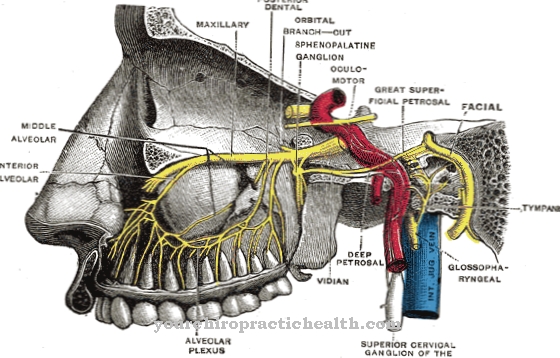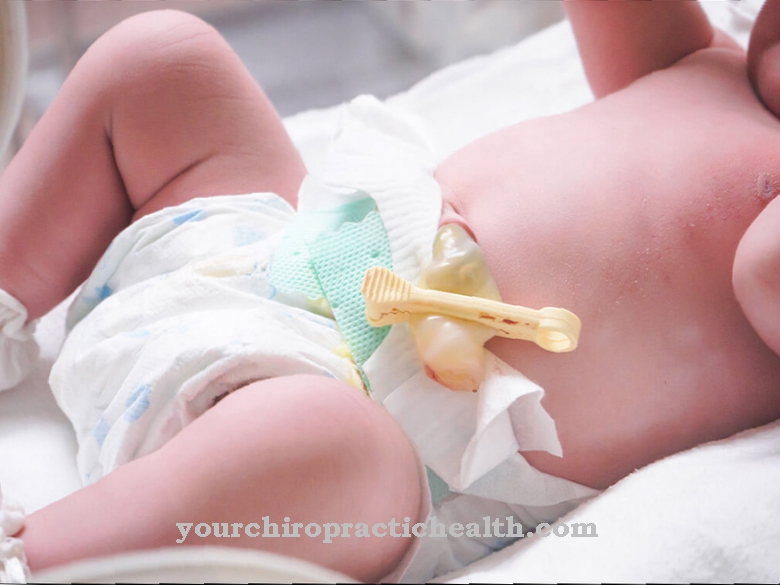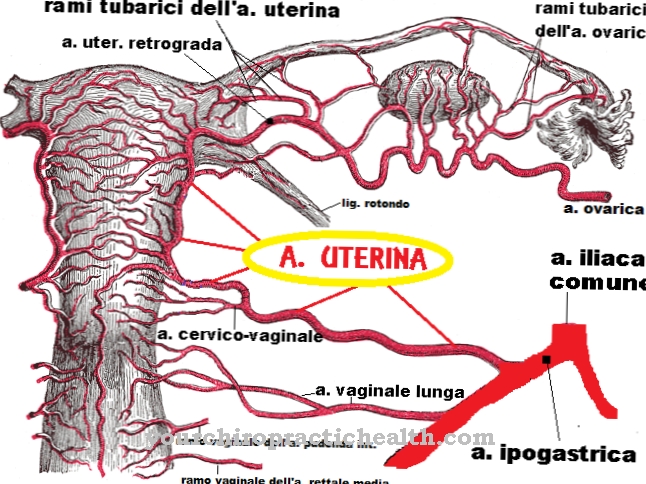The Superior vena cava is one of two vena cava in which the entire venous blood of the body's circulation is collected and fed centrally to the right atrium via the common sinus venarum cavarum. The low-oxygen venous blood from the head and neck area as well as from the upper extremities collects in the superior vena cava and flows into the right atrium during the brief relaxation phase of the two atria.
What is the superior vena cava?
The superior vena cava, also known as the superior vena cava, represents the collecting basin for the venous, oxygen-poor blood from the head and neck area as well as from the upper extremities. The superior vena cava thus absorbs the venous blood from almost all parts of the body above it of the diaphragm.
The equivalent of the superior vena cava is the inferior vena cava or inferior vena cava, which receives the venous blood from the body regions below the diaphragm. Both vena cava flow into the common sinus venarum cavarum in the right atrium. The oxygen-poor blood goes from the right atrium to the right ventricle, from where it is pumped into the pulmonary circulation and re-oxygenated. With a variable cross-section of two to three centimeters, both vena cava represent the veins with the largest diameter. The term vena cava, which corresponds to the Latin vena cava, goes back to the phenomenon that both vena cava in deceased people do not contain blood, i.e. are hollow.
Anatomy & structure
The superior vena cava arises at the level of the first rib through the union of the left and right brachiocephalic veins. With a length of only five to six centimeters, it runs directly to the right atrium or to the sinus venarum cavarum.
At the level of the third rib, the azygous vein joins the superior vena cava. The azygos vein deserves special mention because, together with the hemiazygos vein, it forms so-called cavocaval anastomoses, connections between the two venous systems of the upper and lower vena cava, so that in the event of stenoses or blockages in one of the two venous plexuses, the other venous system to a certain extent can serve as a back-up. With the exception of the missing venous valves, the histological structure of the walls of the superior vena cava basically corresponds to that of the other blood vessels.
The innermost of the three layers that make up the vessel walls is called the intima and consists of a single-cell layer of epithelial cells. The middle layer, the media, adjoins the intima on the outside. It consists mainly of a network of elastic and collagen fibers. The outermost layer, the adventitia, which connects to the outside of the media, is mainly formed from connective tissue and, in the case of the superior vena cava, also contains smooth muscle cells and blood vessels to supply the vein walls.
Function & tasks
The main function of the superior vena cava is to absorb the venous, deoxygenated blood from the body structures above the diaphragm. Together with its counterpart, the inferior vena cava, the superior vena cava directs the "used", oxygen-poor blood of the body's circulation into the right atrium.
From there the blood reaches the right ventricle and is pumped into the pulmonary circulation during the ventricular beat phase (ventricular systole). In the lungs, oxygen is re-enriched and the carbon dioxide is excreted. The central venous blood pressure fluctuates between 0 and about 15 mm Hg and is therefore much lower than the arterial blood pressure. Similar to the large volume of the main artery of the body, the aorta, with its Windkessel function, which reduces the systolic pressure peaks and maintains the residual diastolic pressure in the arteries, the two vena cava have a similar stabilizing influence on the venous side of the large blood circulation.
The elastic fibers in the media of their vessel walls make it possible for the lumen of the vena cava to adapt passively to the requirements. Through connections between the venous systems of the upper and lower vena cava (cavocaval anastomoses), the vena cava superior can take on a back-up function for the inferior vena cava and vice versa.
Diseases
The most common health problems in connection with the superior vena cava are based on mechanical functional impairment of the vena cava. Either it is compressed so that its full cross-section is no longer available for the passage of venous blood or internal stenoses or thrombi obstruct the blood flow.
The symptoms that occur are similar for both causal complexes and are referred to as vena cava syndrome. The functional impairment of the vena cava can either be temporary, as is often observed in heavily pregnant women, when the child compresses the inferior vena cava and sometimes leads to serious symptoms, or it can lead to permanent problems in the case of space occupation by tissue growth. When the upper vena cava is compressed or otherwise obstructed, symptoms of the so-called upper congestion appear. In those affected, the neck veins build up initially, and an uncomfortable feeling of pressure arises in the neck and head area.
In the further course, the veins on the head and arms can congest and become clearly visible. The cause of the upper accumulation of influence are mostly compressions that arise from the space occupied by tumors or other tissue growths. High-frequency atrial fibrillation can also trigger symptoms of upper congestion.
























.jpg)



